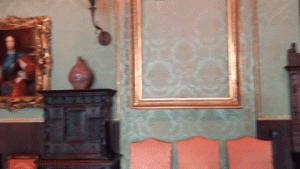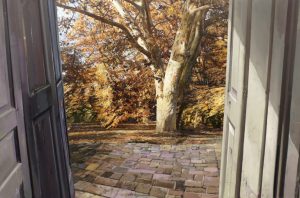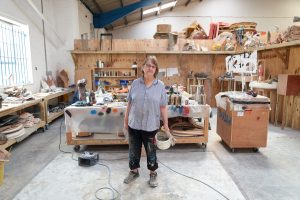In the contemporary landscape it’s not unusual to encounter exhibitions online. These could be artworks made for the digital space or not, but what takes place when we look at these artworks? Does the experience differ from the one that occurs within the four walls of the gallery?
It would be all too easy to impose a dichotomy on the situation, to state that the difference is one of physical and non-physical space. However that neglects the fact that the visitor to this online exhibition still navigates this world from a physical space. They hold a tablet, laptop or a mouse, these physical means are their ways of directing and processing the digital exhibition space.
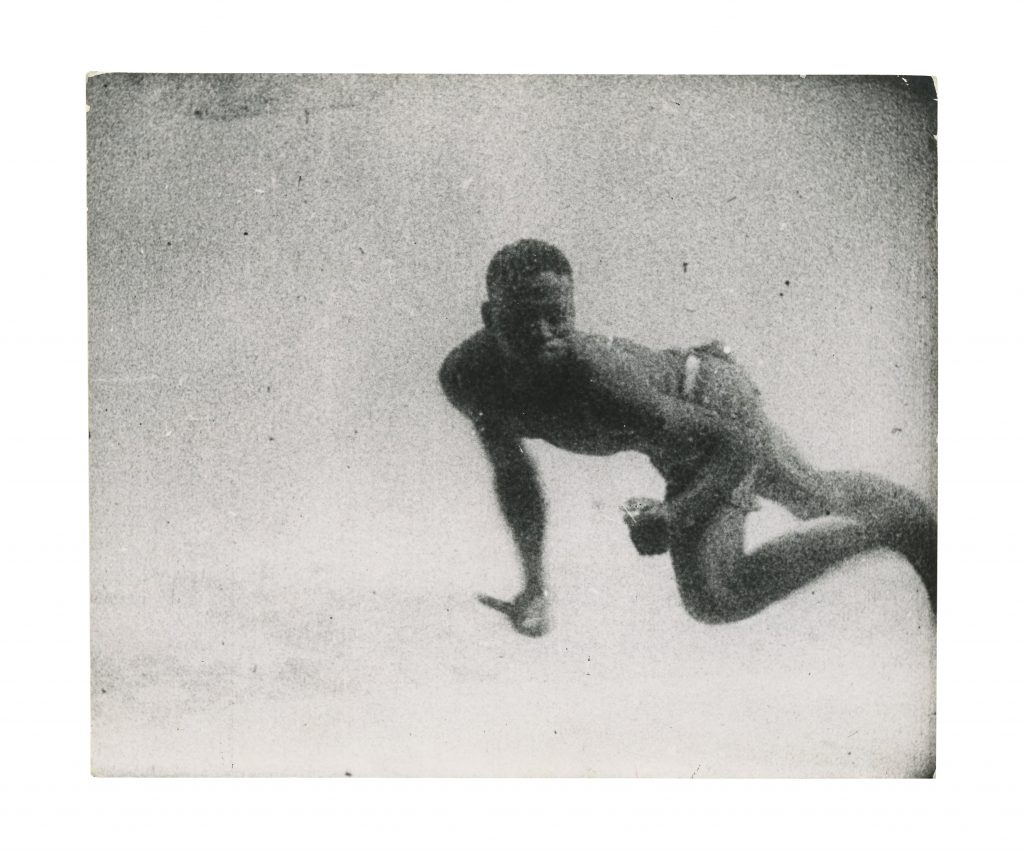
‘Diving’ Anonymous 17.4 x 14.4 cm Vintage gelatin silver print
To view an online exhibition is to enter a liminal space. Is the viewer fully engaging in the act of looking or does the mediation of technology alter this act? One exhibition that is currently online is on the website of Michael Hoppen Gallery. Entitled ‘Passing Time’ the exhibition is a collection of photographs by anonymous photographers. Aside from having no artist’s name attached to their works, these photographs all show people at leisure. These images are joyous and totally captivating. One particular photograph, ‘Walter Hunchake’, shows a man leaping into water. He is forever falling, captured in a moment of surrender. Does the act of scrolling change the way we view the work?. Instead of walking from photograph to photograph, seeing a work from a far and then approaching, the viewer swipes or clicks. Of course ‘Passing Time’ raises additional questions than other online exhibitions, because the works on show are analogue. They are analogue photographs transposed onto a digital realm. The grain of the analogue photograph combines with the digital grain.
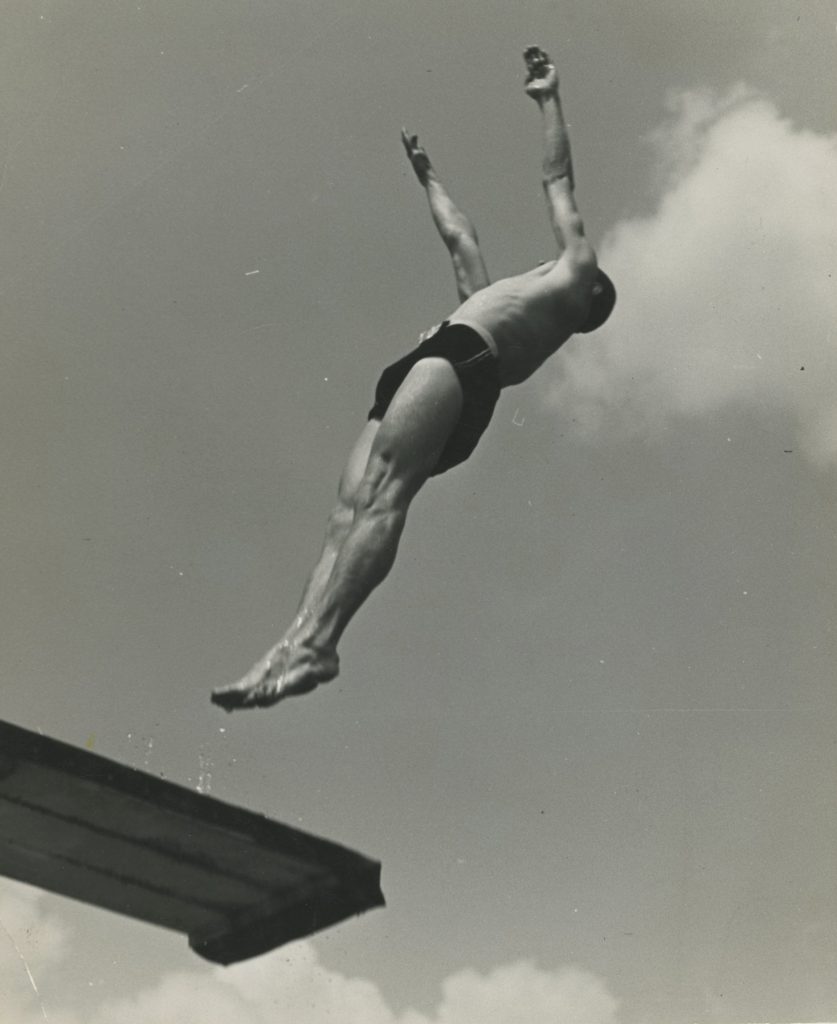
Walter Hunchake Anonymous 19.3 x 23.7 cm Vintage gelatin silver print
With online exhibitions the question of technological mediation always rears its head. The viewer sees the work through a prism. However, when encountering work in a gallery, there is still a system of mediation. The changes is the different level of physicality.
In online exhibitions there is often an attempt to translate the gallery space into a digital site. This can either be a frustrating way of mimicking the space instead of doing something new, or as an anchor, a familiar guide to aid the viewer through new territory. Like exhibitions is the gallery space, this all depends on the aims and direction.

Iain Nicholls & Alison Gill Seeds Modules and Inverted Terrain 2016 © Iain Nicholls & Alison Gill, 2016 Courtesy Gazelli Art House
Another gallery, Gazelli Art House, also translates the methods of the gallery into a digital realm. Since 2015, they have played host to a series of digital residencies. This month, artist Ben Wheele, who’s works explore the uncanny nature of the digital age, takes up the mantle. Each four-week residency offers a new way for artist and viewer to interact with digital art. Last month saw Iain Nicholls and Alison Gill navigate the differences between actual space and the space of VR, in a attempt to formulate new ways of making art that navigates digital and traditional.
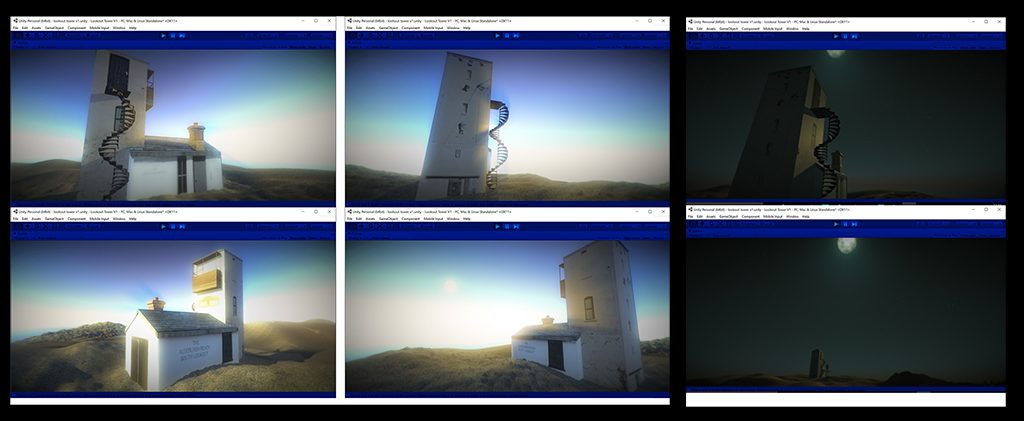
Iain Nicholls & Alison Gill Lookout Lookout – Experiments in a Virtual Double World 2016 © Iain Nicholls & Alison Gill, 2016 Courtesy Gazelli Art House
These spaces are two examples of the viewer’s gaze in the digital realm. There are vast differences in the experiences of online and real world exhibitions. When analogue photography becomes transposed into digital, the prized grain becomes something less tangible. It merges with the digital screen. Although the physical sense of the grain is lost, what unites all online exhibitions is the tactile nature of the experience. This is something new. The viewer’s gaze becomes technologically mediated. The viewer navigates their way through the exhibition, not wholly by sight or bodily relation but by touch. The gaze and the touch become fused. The online exhibition is a process of haptic exploration.
Passing Time, until 29th July.
Gazelli.io Digital Art House, Ben Wheele, throughout July


